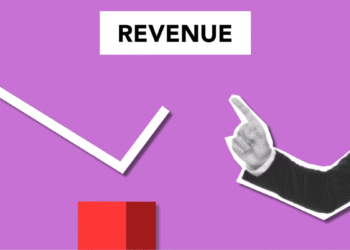Man, I used to dread reading customer reviews.
Not gonna lie, I’d sit there staring at the screen, hoping it was mostly five stars and happy emojis. The second I saw a negative one? Total gut punch. I took it way too personally. But over time, I realized I was looking at it all wrong.
Reviews — especially the bad ones — are golden opportunities to actually build a stronger brand.
And yeah, it sounds cheesy, but the way you respond to customer reviews says everything about your business. It’s not just about damage control — it’s about building real trust and engagement.
Why Your Responses Matter? (Even on 5-Star Reviews)
Let me just say this — replying only when someone’s mad? Big mistake. I used to do that, thinking, “Hey, they’re happy already, I don’t need to say anything.” But then I noticed something: the brands I admired always replied to positive reviews. Even a quick “Thanks for the kind words!” made it feel more human.
So I started replying to every review. Good, bad, lukewarm — all of it.
And guess what? People noticed. Some even edited their reviews later to say how surprised they were to get a reply. One customer literally wrote: “Wow, I didn’t expect a response — thanks for being awesome!” That moment made it click for me: engaging with your reviewers builds loyalty and community.
Want to take it even further? Try automating review requests via email — just don’t automate the responses.
Dealing with Negative Reviews Without Losing Your Cool
Look, not every customer’s gonna be thrilled. Sometimes it’s a shipping delay. Sometimes it’s user error (we’ve all been there). And sometimes, yeah, it’s your fault. But here’s the secret: it’s not about being perfect — it’s about how you handle it.
Here’s my little review response cheat sheet I’ve built over time:
-
Respond fast. If someone’s upset, don’t let it sit. The longer you wait, the worse it looks.
-
Thank them — even if they’re mad. I always start with, “Thanks for your feedback — we appreciate you taking the time to share this.”
-
Acknowledge the issue. Don’t get defensive. Just say, “I understand this was frustrating,” or “I’m really sorry we missed the mark here.”
-
Offer a solution. Whether it’s a refund, replacement, or just helping them figure something out, make it right.
-
Take it offline when needed. I usually end with, “Feel free to email us directly at [support@…] so we can fix this ASAP.”
And here’s the thing: I’ve had angry customers turn into raving fans just because of how we handled their complaint. It’s so worth the effort. If you’re not sure how to approach it, here’s a helpful guide on how to handle negative reviews professionally.
Boosting Engagement Through Review Conversations
One of the smartest things I ever did? I started using reviews as a way to start conversations.
Someone says, “Love the product but wish it came in more colors”? I reply, “That’s great feedback — we’re actually testing new shades soon. Want to help us choose?” Boom. Now it’s not just a review — it’s a relationship.
Reviews aren’t static. They’re opportunities. Opportunities to:
-
Ask follow-up questions (“What was your favorite part?”)
-
Tease new product features
-
Share tips (“Here’s how to get the most out of it!”)
-
Turn a one-time buyer into a return customer
When people feel heard, they come back. And they tell their friends. That’s how you build engagement organically.
Want to get more of those reviews in the first place? Check out how to encourage customers to leave reviews — it’s a game changer.
What to Say When You Don’t Know What to Say?
Sometimes, you’re stuck. You read a review, and your brain just flatlines. It happens.
In those moments, I keep a few go-to phrases handy:
-
“We’re so glad you shared this — it really helps us grow.”
-
“That’s great feedback — mind if we reach out to learn more?”
-
“Sorry we didn’t deliver a 5-star experience this time. Let’s make it right.”
You don’t have to write a novel. You just have to show up. That’s what people remember.
For inspiration, look at how other businesses use testimonials to build trust. A simple response can turn into powerful social proof.
Don’t Over-Automate It
Quick story: I once tested auto-replies to reviews. Big mistake. I thought it’d save time. But customers caught on fast. One even said, “This feels like a bot.” Ouch.
Now I use templates, sure — but I personalize every single one. I’ll mention their name, what product they bought, or reference something specific they said. Makes a huge difference. People want to know there’s a real human behind the screen.
And don’t forget: not all reviews are real. Stay sharp by learning how to manage fake or spam reviews. It’ll save you a lot of headaches.
Final Thoughts: It’s Not About Reviews, It’s About Relationships
At the end of the day, responding to customer reviews is really just… listening. And showing people you care. It builds credibility, sparks conversation, and turns occasional buyers into loyal supporters.
It’s easy to ignore the review section — I’ve been guilty of it. But once you treat it like a two-way street, everything changes. More engagement. More trust. And yeah, more sales.
So next time you see a review come in? Don’t just read it — reply. Your future customer might be watching.







